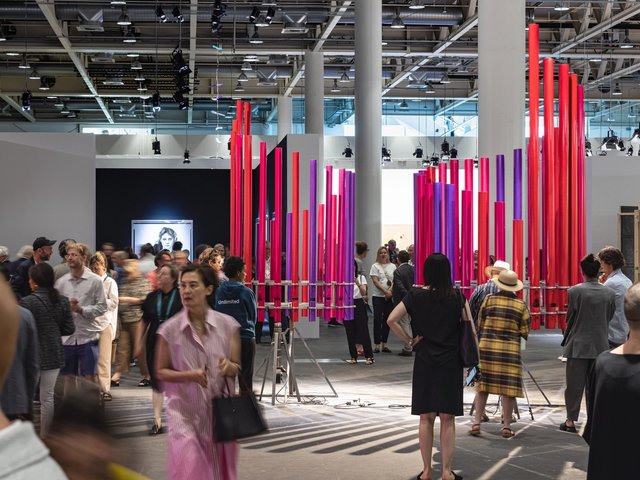Global sales of art and antiques have fallen for a second consecutive year, declining by 12% in 2024 to an estimated $57.5bn, finds the latest Art Market Report by Art Basel/UBS. “It's been a very challenging year overall,” says Clare McAndrew, the founder of the research firm Arts Economics, who authored the report.
This is the third-largest contraction of the global art market in the past 15 years, according to the report, eclipsed only by the years of the 2009 recession (-36%), and the 2020 Covid-19 pandemic (-22%), and on par with the 12% drop recorded in 2012.
Sales fell in almost every region, with China most affected, seeing a decline of 31%. Sales in the US, the world's largest art market, decreased by 9%, and slid by 10% in both France and Italy, and 15% in South Korea. “Despite Brexit-related challenges” the UK contracted by a more moderate 5%, and has retained its position as the second-largest art market.
As the report lays out, the dynamics of last year’s contraction broadly mirror those of 2023, when total sales fell by 4% with the highest price points most affected, due to “ongoing geopolitical tensions, economic pressures and shifting buying behaviour”.
The once-booming contemporary sector was hit hard, with sales at auction dropping by 36% to $1.4bn, their lowest level since 2018. Amid a return to more tried-and-tested names, McAndrew notes a growing aversion to risk among buyers.
“Several dealers spoke of a lack of curiosity among clients,” she tells The Art Newspaper. “They say they used to fight with collectors for works at artists studios. Now everyone wants to buy someone they've already heard of. The appetite for the unknown isn‘t there anymore.” The report notes that galleries are more heavily relying on their top three best-selling artists due to “more selective buying by collectors”.
However, while sale value is down, trading volume grew by 3%, reflecting greater activity at lower-priced segment of works priced under $50,000.
A shift in balance?
Auction houses last year sold 20% less by value but 4% less by volume. A similar trend was seen in the gallery sector, and hinted to the emergence of a more balanced and democratic ecosystem: dealerships with the smallest turnovers, under $250,000, saw the greatest increase in sales, with a 17% boost, while those with a turnover exceeding $10m experienced a 9% decline.
However, these small gains are undermined by plummeting profitability across most of the art and antiques market, as prices for virtually all aspects of the business, from shipping to rent, have increased.
Other positives to take away from the report, McAndrew says, are the increased sales of work by women artists in the primary market, up 3% year-on-year.
While the art market experienced regular fluctuations, the report also shows that for the past decade, it has struggled to reach its 2014 peak, despite a significant increase in wealth among the collecting class, especially billionaires.
Reflecting on the future of the art market, one dealer is quoted in the report as saying: "Existing young collectors are no longer buying paintings. With the bursting of the contemporary art bubble, there is a high reliance on older collectors who prefer Modern and Post-War art… (but) many of these collectors are in their 60s and 70s, so I am worried about what the art scene will look like 10 years from now.
“On the other hand, we know there is a high proportion of wealthy people who have no experience in purchasing art, and the challenge for dealers is how to reach them, rather than focusing on existing art collectors."






